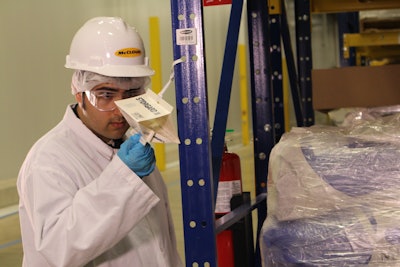
Imagine this: You’re walking the floor of your facility one afternoon, and out of the corner of your eye, you see something flit by. You know it’s an insect, and since it’s airborne, you know it’s a flying insect. But do you know what kind it is?
On the surface, it may not seem that important to be able to identify the type of insect you’ve seen. But, in reality, when it comes to pest control, one rule applies: You have to know your enemies to know where they breed and how to eliminate them.
Getting to know you
According to McCloud Services, a leader in integrated pest management solutions, flying pests and their preferred habitats vary greatly. For instance, filth flies breed in dirty outdoor areas where bacteria are prevalent, e.g., on garbage, carcasses and/or feces outside a building. Cluster flies resemble filth flies, but they lay their eggs in the soil. When the maggots hatch, they burrow into earthworms, where they live until they’re all grown up.
On the other hand, many types of small flies, such as fruit flies, phorid flies, drain flies and fungus gnats, breed inside facilities. For example, red-eyed fruit flies are partial to food that has just started to ferment and lay eggs in areas where fruit is prepared or stored. But dark-eyed fruit flies and drain flies go for totally rotten food, so they tend to breed in drain gunk. Fungus gnats typically set up house in potted plants, while phorid flies prefer broken drains or sewers.
Stored product pests are another matter: They live in the food they eat, typically during the larval stage. Generally speaking, they favor a diet of grain-based foods, although some will eat almost anything, including spices. They can nestle—and breed—unseen and undisturbed for years in forgotten ingredients or products stored on remote shelves or spillage that’s been allowed to accumulate. And, you may not have a clue they’re in your facility until you see some adults flying around.
Getting rid of unwanted guests
Considering the numerous types of flying pests and the disparity in their breeding practices, McCloud Services says it may be difficult for most food processors to know their enemies and how to get rid of them. For instance, cleaning out drains will take care of some small flies, but it won’t do a thing if filth flies are the real problem.
Consequently, if you see any “unidentified flying objects” in your facility, it may be wise to bring in a pest management professional to help you figure out the type of insects you’re dealing with and the right places to search for them. Together, you’ll be able to implement integrated pest management strategies that will eliminate these little pests that can lead to big losses for your business.















